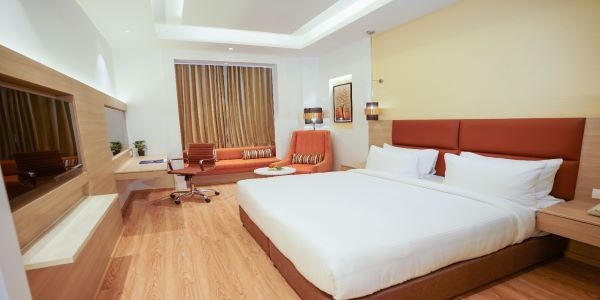The hotel industry demand has recovered at a sharp pace post Covid 2.0, aided by easing restrictions, high pace of vaccination and pent-up demand. The demand for hotel stays in the last few months has come primarily from staycations, weddings, travel to driveable leisure destinations, and special purpose groups. Biscations (working from a resort) also saw traction in Q2 and the early part of Q3 FY2022. Business travel pickup, mainly to project sites/manufacturing locations, was also seen in specific sectors, although it remained low compared to pre-Covid levels. However, demand will be curtailed in Q4 FY2022, at least in January 2022, because of the Covid wave.
Says Vinutaa S, Assistant Vice President and Sector Head, ICRA, “The Pan-India premium hotel occupancy picked up from July 2021 post relaxation of lockdown and was 50%+ in Q3 FY2022, better than our earlier expectations. The QoQ revenue improvement was ~117% in Q2 FY2022 and is expected to improve by another 15% sequentially in Q3 FY2022, supported by the healthy festive season travel witnessed. For 9M FY2022, the estimated the Pan-India premium hotel occupancy was ~40-42% (up from ~20-22% in 9M FY2021). The Pan-India ARRs were at a 25-30% discount to pre-Covid levels, although some high-end hotels and leisure destinations have reported pre-Covid ARRs in the last few months. The Pan-India RevPAR remained 50-55% lower than pre-Covid levels and at ~60-65% discount to the FY2009 peak for the said period. With the emergence of the Omicron variant and sharp rise in infections, several states have imposed partial lockdowns. This will curtail travel over the next few weeks. We are witnessing cancellations and hotel enquiries have dropped. A month of complete lockdown will impact FY2022 Pan-India occupancy by ~4 percentage points”
Leisure destinations like Goa and Jaipur witnessed healthy occupancy, with Goa’s occupancy being higher than pre-Covid levels in the last few months. Mumbai and Delhi also witnessed over 60% occupancy since August 2021, while Pune and Bangalore remained laggards. The recovery has largely been occupancy driven, with ARRs lagging in most markets. Leisure destinations and some high-end hotels were exceptions, reporting ARRs at pre-Covid levels or higher.
ICRA’s sample reported a QoQ revenue improvement of ~117% in Q2 FY2022 and is expected to improve by another 15% sequentially in Q3 FY2022, given the healthy festive season travel witnessed. The operating margins are also expected to witness sequential improvement in Q3 FY2022, with better operating leverage. However, the financial performance in Q4 FY2022 is linked to the intensity of the current Covid wave and the lockdowns. While coverage metrics are likely to improve sequentially in Q3 FY2022, return to pre-Covid levels is still a few quarters away.
Adds Vinutaa, “Notwithstanding the potential Omicron impact we expect a healthy YoY revenue growth for the hotel industry in FY2022 supported by Q2 and Q3 demand, closing at 50-55% of pre-Covid revenues for the full year. The net losses are likely to be lower compared to FY2021, supported by operating leverage benefits and sustenance of some of the cost-saving initiatives undertaken earlier. Hotels are likely to report pre-Covid margins at 85-90% of revenues going forward. The FY2022 debt metrics will remain stretched and return to pre-Covid levels is sometime away. The RoCE is expected to remain sub-cost of capital at least for the next 3-4 years. Given the relatively high fixed costs in the business, any significant demand slowdown/prolonged lockdowns will require external support. Lenders are cautious as far as this sector is concerned, and incremental external funding is largely expected to be based on promoter comfort. Over the medium term, ICRA expects that promoters would bring in capital or monetize assets held by companies, to improve capital structure.”
Compared to the previous downcycle in FY2009, which saw untimely supply increases of over 15% of the inventory at the bottom of the cycle in FY2009-2013, the current pipeline inventory is about 3-4% for the period FY2022-FY2025 – with supply largely being in gateway cities and leisure markets. This will facilitate an upcycle, as demand improves over the medium term, and supply lags demand. Hotels are capital intensive businesses and the financial stress from Covid-19 will result in consolidation in the industry over the medium-term.






